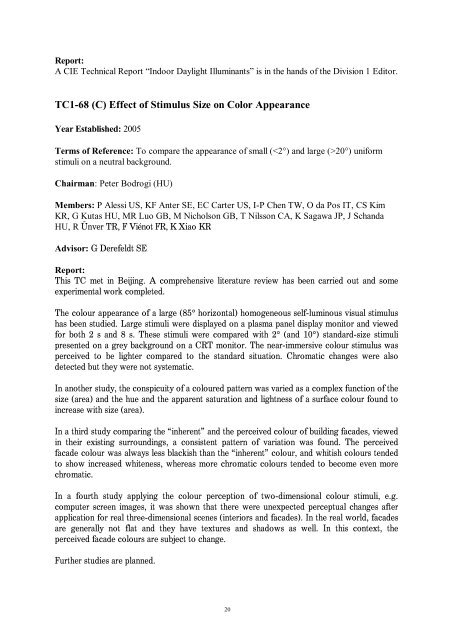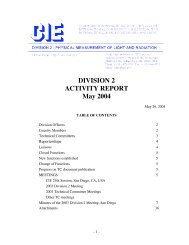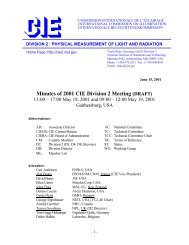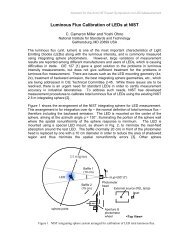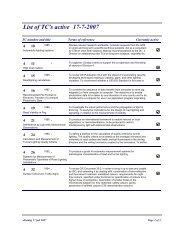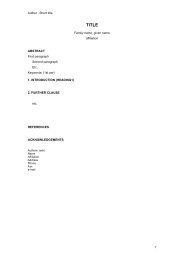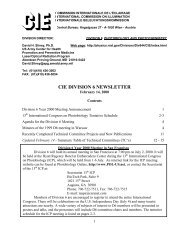ACTIVITY REPORT DIVISION 1 - cie
ACTIVITY REPORT DIVISION 1 - cie
ACTIVITY REPORT DIVISION 1 - cie
You also want an ePaper? Increase the reach of your titles
YUMPU automatically turns print PDFs into web optimized ePapers that Google loves.
Report:<br />
A CIE Technical Report “Indoor Daylight Illuminants” is in the hands of the Division 1 Editor.<br />
TC1-68 (C) Effect of Stimulus Size on Color Appearance<br />
Year Established: 2005<br />
Terms of Reference: To compare the appearance of small (20°) uniform<br />
stimuli on a neutral background.<br />
Chairman: Peter Bodrogi (HU)<br />
Members: P Alessi US, KF Anter SE, EC Carter US, I-P Chen TW, O da Pos IT, CS Kim<br />
KR, G Kutas HU, MR Luo GB, M Nicholson GB, T Nilsson CA, K Sagawa JP, J Schanda<br />
HU, R Űnver TR, F Viénot FR, K Xiao KR<br />
Advisor: G Derefeldt SE<br />
Report:<br />
This TC met in Beijing. A comprehensive literature review has been carried out and some<br />
experimental work completed.<br />
The colour appearance of a large (85° horizontal) homogeneous self-luminous visual stimulus<br />
has been studied. Large stimuli were displayed on a plasma panel display monitor and viewed<br />
for both 2 s and 8 s. These stimuli were compared with 2° (and 10°) standard-size stimuli<br />
presented on a grey background on a CRT monitor. The near-immersive colour stimulus was<br />
perceived to be lighter compared to the standard situation. Chromatic changes were also<br />
detected but they were not systematic.<br />
In another study, the conspicuity of a coloured pattern was varied as a complex function of the<br />
size (area) and the hue and the apparent saturation and lightness of a surface colour found to<br />
increase with size (area).<br />
In a third study comparing the “inherent” and the perceived colour of building facades, viewed<br />
in their existing surroundings, a consistent pattern of variation was found. The perceived<br />
facade colour was always less blackish than the “inherent” colour, and whitish colours tended<br />
to show increased whiteness, whereas more chromatic colours tended to become even more<br />
chromatic.<br />
In a fourth study applying the colour perception of two-dimensional colour stimuli, e.g.<br />
computer screen images, it was shown that there were unexpected perceptual changes after<br />
application for real three-dimensional scenes (interiors and facades). In the real world, facades<br />
are generally not flat and they have textures and shadows as well. In this context, the<br />
perceived facade colours are subject to change.<br />
Further studies are planned.<br />
20


